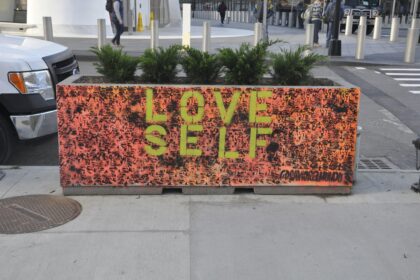There’s a quiet ache that lingers when someone crosses the boundaries we’ve carefully built to protect our hearts. It feels like watching the walls we trust crumble, leaving us exposed and uncertain. Healing after such moments isn’t just about mending what’s broken-it’s about rediscovering our strength, learning to stand tall again, and rebuilding those boundaries with intention and care. In this space, we’ll explore the emotional journey of reclaiming our hearts and creating new lines that honor our worth, giving ourselves the chance to heal and to love with renewed courage.
Understanding the Emotional Impact of Boundary Violations
When boundaries are crossed, the emotional aftermath can feel overwhelming and deeply personal. It often triggers a complex mix of emotions such as betrayal, confusion, and vulnerability. These feelings arise because boundaries are not just rules-they are extensions of our identity and self-respect. When they’re ignored, it’s as if a part of our inner world has been disregarded, leaving wounds that affect our sense of safety and trust. The emotional turmoil may manifest as anxiety, anger, or even self-doubt, demonstrating how boundary violations reach beyond the immediate moment to touch the core of our emotional well-being.
Recognizing the emotional impact is the first step towards healing and reclaiming your power. It’s important to validate your feelings without judgment and understand that processing hurt takes time. Embracing supportive practices can create space for recovery, such as:
- Journaling your thoughts to gain clarity
- Seeking empathetic connections with trusted friends or therapists
- Practicing mindfulness to stay grounded in the present
By acknowledging these emotional ripples, we transform pain into a pathway for rebuilding stronger, more resilient boundaries-layers of protection that honor our worth and nurture our hearts.
Recognizing When and How to Rebuild Your Personal Limits
There comes a pivotal moment when the pain of crossed boundaries becomes too heavy to bear, urging us to pause and reassess our personal limits. This isn’t about building walls to shut others out but rather about crafting a protective space where our emotional well-being thrives. It’s essential to listen to the quiet signals-those moments of discomfort, exhaustion, or resentment-that your heart whispers when a limit has been blurred. Recognizing these feelings is the first brave step towards nurturing yourself and reclaiming a sense of safety and respect in your relationships.
When considering how to reconstruct these boundaries, remember that clarity and kindness must coexist. Start by clearly defining what is acceptable and what isn’t, not only to others but also in your self-talk. Empower yourself by:
- Communicating your needs with honesty and firmness
- Reaffirming your right to say no without guilt
- Gradually testing these new limits to see how they feel and adjust as needed
Each small step you take fortifies your emotional resilience, reminding you that your boundaries are not walls, but bridges to healthier, more fulfilling connections.
Practical Steps to Communicate Your Needs with Confidence
When it comes to expressing what you need, the key lies in embracing vulnerability as a strength, not a weakness. Begin by identifying your feelings and recognizing the specific needs behind them. This clarity empowers you to articulate your thoughts with calm assurance rather than frustration or fear. Speaking in “I” statements, such as “I feel overwhelmed when…” or “I need some space to recharge,” fosters open dialogue while minimizing defensiveness. Remember, your needs are valid and deserve to be heard with kindness and respect.
Building confidence in communication also means setting clear, realistic boundaries and standing firm in them without guilt or apology. Try incorporating these small but powerful habits into your daily interactions:
- Pause before responding: Give yourself a moment to collect your thoughts instead of reacting impulsively.
- Maintain steady eye contact: It reflects sincerity and self-respect.
- Practice active listening: Show you value the exchange by genuinely hearing the other person.
- Reinforce your message calmly: Repeat your needs if necessary, with patience instead of frustration.
These practical steps ground you in your truth, allowing your voice to rise strong from a place of healing, ensuring your heart is honored as you rebuild your boundaries.
Healing Through Self-Compassion and Consistent Self-Care Practices
When our emotional boundaries have been crossed, the path to recovery often begins with a gentle kind of kindness-one that we direct inward. Embracing self-compassion means allowing ourselves to feel hurt without judgment, acknowledging our pain as valid and worthy of attention. It invites a softer internal dialogue, replacing harsh self-criticism with understanding whispers. This nurturing mindset lays the foundation for healing, helping to repair the cracks left behind by emotional wounds. Practicing self-compassion can look like speaking to yourself as you would a trusted friend or creating intentional moments to honor your feelings with patience, rather than rushing to fix or suppress them.
Alongside compassion, daily self-care rituals act as crucial acts of reclamation-simple yet powerful ways to restore our sense of safety and autonomy. These practices are highly personal but often include:
- Setting aside time for mindfulness or meditation to calm the racing mind
- Engaging in creative outlets like journaling or painting to express unvoiced emotions
- Establishing consistent sleep and nutrition habits that support physical and emotional resilience
- Creating small daily boundaries to protect your energy, such as quiet time or saying no when overwhelmed
These continual acts of care, when practiced with intention and kindness, reinforce the belief that you are deserving of respect and healing. They nourish the heart gently, making it stronger and more whole with each compassionate step forward.
The Conclusion
Rebuilding our boundaries after they’ve been crossed isn’t easy-sometimes, it feels like piecing together a heart that’s been cracked in two. But with patience, self-compassion, and the courage to say “this is where I stand,” healing becomes possible. Remember, boundaries aren’t walls meant to keep others out; they’re bridges that help protect our peace and nurture our relationships in healthier, more respectful ways. As we learn to stand firm in our worth, we reclaim the power to love without losing ourselves. So take a deep breath, trust the journey, and know that every step forward is a step closer to a heart that’s whole again.















